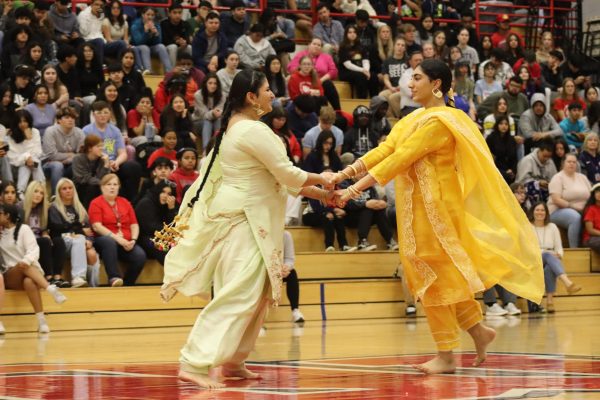21st Century Programs: Are They What They Say They Are?
December 8, 2022
In eighth grade, the phrase “21st Century Programs” really piqued my interest. I was in middle school, and I was tired of having the football players and cheerleaders be the only ones to get attention from the administration. In high school, 21st Century Programs seemed to be the fix. Finally, academics could be the focus of a school, and I could do something that was radically different from what other high school students were doing.
Four years later, I realized that this was not correct. Yes, the five 21st Century Programs at Olathe North provide students with ways to expand their learning into their desired field of interest. Being in a 21st Century program, however, didn’t give me immunity from the typical pitfalls of being in high school like I thought it would.
I believe that Olathe North has the stereotypical cliques that everyone has, but to a lesser extent. More of Olathe North’s cliques are based on 21st Century Programs. I’ve noticed that many kids are friends solely with people in their program, and each program has a specific stereotype associated with it.
These cliques and stereotypes directly contradict my notion that 21st Century Programs offer something unique from what non-program students go through. Cliques are just as ubiquitous to high school as Prom or Friday Night Lights, and 21st Century Programs emphasize them.
I also imagined when I was in eighth grade, that the content of 21st Century Programs would be a world away from what other high school students would experience. Again, programs are just one hour of the day. They have tests and projects just like any other class.
Some programs, like Sports Medicine, offer internship opportunities for seniors who are interested in helping out in the community for their future careers. These internships directly connect high school students with the workforce, which is a common goal of 21st Century programs. Not every program, however, openly advertises these internships. If all programs did fully promote internships, that would further enhance the experience of a 21st Century program.
All of these reasons might seem like a turn off for younger students to apply to these programs, but age is one of the main reasons that 21st Century programs have lost their luster on seniors like myself. Quite simply: as kids get older, they change. I have felt that, since 8th grade, my career ideas and values have transformed. That’s completely natural, and I am appreciative that 21st Century Programs have aided me in my career goals, albeit in a way that was different from what I expected.
21st Century Programs are a helpful resource for students who are exploring their career paths. But for kids who are looking for a high school experience that is wildly different from other schools, 21st Century programs may not fit the bill.




